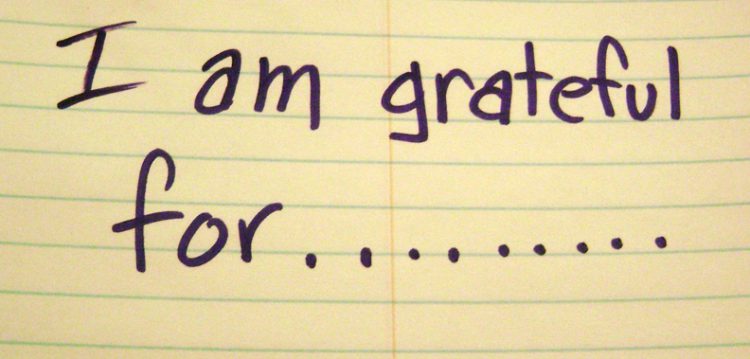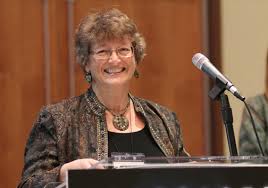An attitude of gratitude

Back to Basics series, Jewish Family Education with Candace R. Kwiatek, The Dayton Jewish Observer
Did you ever notice that Judaism promotes an attitude of gratitude? In the Torah, God announces that Creation is good, and commands a blessing of thanks after eating.
Shabbat, the festivals, and most of the holidays both biblical and modern reflect gratitude. Expressions of thanksgiving fill the Psalms and prayer books.
In gratitude to women, whose activities benefit the family and community, Kabalists instituted the Shabbat recitation of Eshet Chayil, A Woman of Valor, an excerpt from Proverbs 31.
Formal blessings abound for every conceivable occasion. But beyond religious ritual and obligation, does gratitude have a more significant objective?
Modern research offers some surprising answers. Five different studies at the University of Kentucky demonstrated a consistent link between gratitude and lower aggression.
Researchers concluded that gratitude increases empathy, inspiring people to identify and express positive connections to and concern for others, and motivates pro-social behaviors in contrast to aggressive behaviors (C. Nathan DeWall et al, A Grateful Heart is a Non-violent Heart).

In other words, there is empirical evidence that gratitude fosters behaviors like love the stranger, care for the needy, do not steal, and pursue peace — all of which are explicitly Jewish moral values.
In Ethics of the Fathers, Ben Zoma teaches, “Who is rich? He who rejoices in his portion.”
Again, science concurs. In a UC Berkeley study using daily journaling, researchers found that the number of recorded “gratitude experiences” directly correlated with increased happiness, greater satisfaction with life, higher resilience to stress, and reduction in numerous physical maladies (Emiliana Simon-Thomas, A ‘Thnx’ a Day Keeps the Doctor Away). While uplifting society, gratitude also benefits the individual.
The positive personal and social effects of an attitude of gratitude, however, only emerge when attitude is turned into action.
In a summary of the 2012 Gratitude Survey conducted for the John Templeton Foundation, researcher Janice Kaplan reported that while most Americans describe themselves as grateful, barely 50 percent express gratitude on a regular basis even though more than 90 percent agree that gratitude leads to greater fulfillment and a richer life.
Of particular note were the bell-curve findings that those identifying as religious believe they have much to be thankful for (75 percent) and express gratitude regularly (63 percent) compared to the non-religious (39 percent and 32 percent, respectively).
So how can we instill the menschlich (decent, exemplary human) trait of gratitude in ourselves, and in our children and grandchildren?
While religious living is one path, the Pew Report on Jewish life (2013) points out that there is an increasing secularization of younger generations and a rejection of religious traditions overall.
Is gratitude a lost cause for the secular Jew? Or could the deliberate cultivation of gratitude as a genuinely Jewish value be a parallel path for building Jewish identity?
The Hebrew words for thank and acknowledge (todah and hodah) share the same root, linking gratitude with the conscious recognition or awareness of something that merits thankfulness.
The virtue of recognizing the good, hakarat hatov, gave rise to the Jewish tradition of “100 blessings each day.”
Begin small, but count your blessings regularly. Maybe start each day with modeh ani, the traditional morning prayer of thankfulness for the new day, or invent your own.
Share one good thing as part of bedtime rituals or together time on Shabbat. Invite children to identify good things in their lives in a drawing, list, or journal.
Capitalize on teachable moments to verbalize your gratitude for good things — small or large — people, places, things, or events.
Teach your children to savor the moment, focusing on experiences and people rather than material things. Involve children in household tasks to develop an awareness of the good others do for them.
Encourage them to earn their own spending money. Avoid the unending accumulation of stuff; rather than blessing, it encourages dissatisfaction by focusing on what might be better in the future.
Say thank you to the mail carriers and cleaning staff. Express gratitude to your parents and spouse in the hearing of your children.
Recognize the good in your child and say it aloud or in a note, emphasizing virtues and character over accomplishments. Send thank you notes for gifts but even more often for acts of goodness, and insist your children do the same.
Wonder together with your child. How can a random act of gratitude change the recipient? The giver? How might it have a ripple effect? How will it improve the world in some way, big or small? Ask what your child thinks will happen when you express your appreciation to the plumber, teacher, sales clerk, or spouse, but don’t allow just one answer. Ask, “And then what?” Discuss why gratitude is such an important Jewish value.
In Why Be Jewish?, the late Edgar Bronfman describes his weekly personal character “mirror test.”
Using universal Jewish virtues as his touchstone, he asks, “What positive attributes do I need to strengthen? What negative traits do I need to address? Where am I out of balance?”
Considering an attitude of gratitude, how would your image respond? What about your child’s? Take heart: even a single act of gratitude can make a world of difference.
Literature to share
New Year at the Pier by April Halprin Wayland. This award-winning picture book is an excellent introduction to the challenging High Holy Day themes of hurtful behaviors, repentance, and forgiveness through the Rosh Hashanah tradition of tashlich, tossing breadcrumbs into moving water to symbolize casting away misdeeds. Perfect for the early elementary set.
Why be Jewish? A Testament by Edgar Bronfman. Part memoir, part challenge, this final work by the businessman and philanthropist traces his late-in-life journey to rediscover and perhaps expand the meaning of Judaism. In 12 short chapters, Bronfman shares key Jewish tenets and personal insights from a secular rather than a religious view, opening new doorways into Judaism for the modern thinker. Highly recommended, especially for millennials and seekers of all ages.
To read the complete September 2016 Dayton Jewish Observer, click here.



